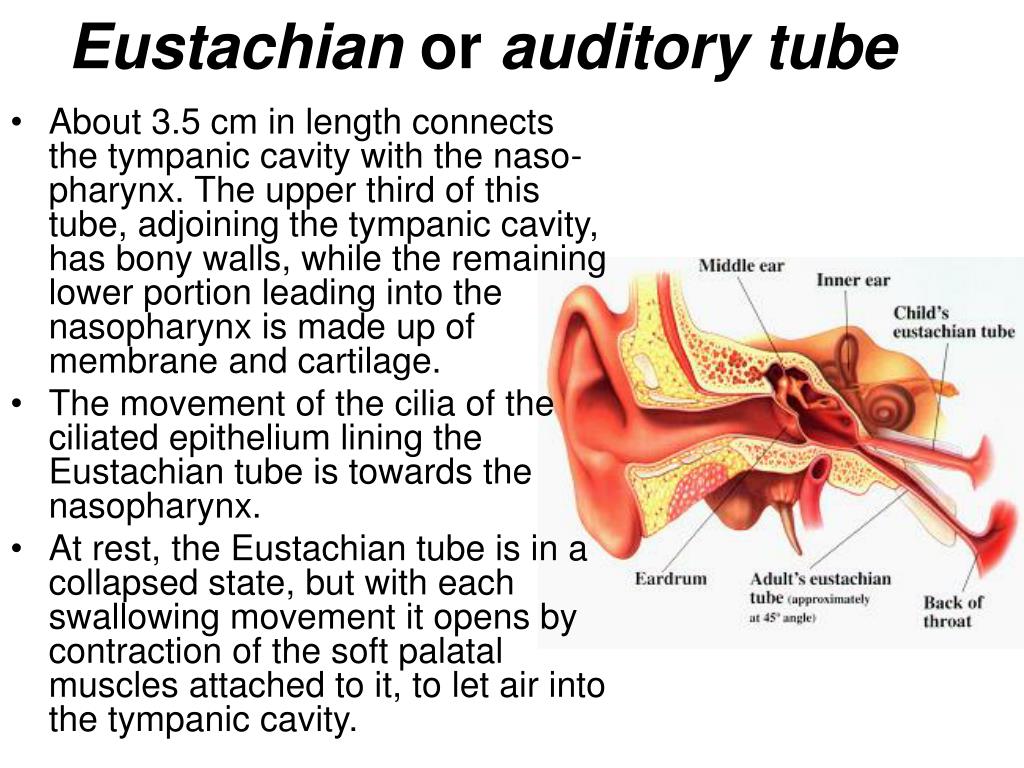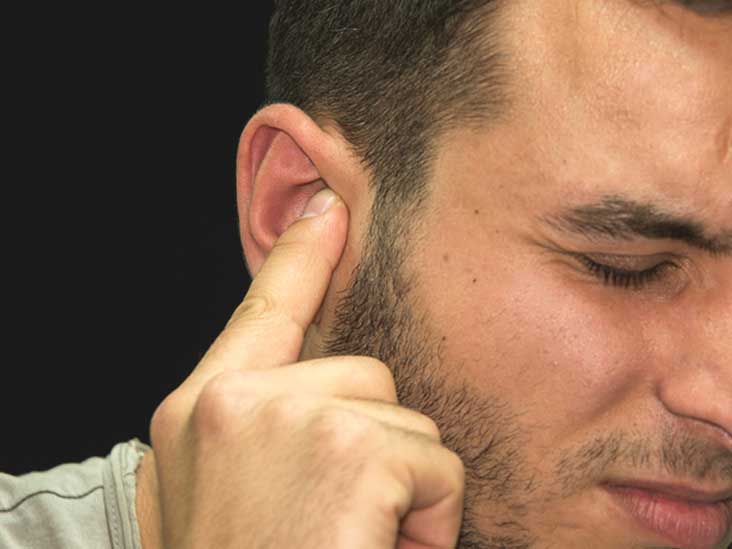

Eustachian tube dysfunction (ETD) is estimated to affect 1% of adults and 40% of children.
#Auditory tube of ear registration#
Trial registration Chinese Clinical Trial Registery (ChiCTR2000029071) Registered 12 January 2020-Retrospectively registered, Įustachian tubes maintain middle ear ventilation and pressure balance, enable mucus clearance and protect the middle ear from pathogens and sounds. After treatment with nasal glucocorticoids and oral antihistamines, eustachian tube function can significantly improve as nasal symptoms subside. The local conditions of the pharyngeal orifices of the eustachian tubes are closely related to the symptoms of ETD. ConclusionsĪR patients, especially those with severe nasal obstruction, could have ETD. After 1 month of treatment, VAS scores of nasal symptoms, endoscopic scores and ETDQ-7 scores were significantly decreased in AR patients ( p < 0.0001), and TMM examination also suggested that eustachian tube function was significantly improved after treatment ( p < 0.0001). Nasal endoscopic scores were also positively correlated with ETDQ-7 scores, with a correlation coefficient of 0.7328 ( p < 0.0001). With regard to nasal symptoms of AR, the VAS scores of nasal obstruction were correlated with the ETDQ-7 scores, and the correlation coefficient was r = 0.5124 ( p < 0.0001). Twenty-two AR patients (37.3%) and 9 healthy controls had an ETDQ-7 score ≥ 15. TMM examination revealed that 22 patients (39 ears, 33.1%) among the AR patients and 5 healthy controls (7 ears, 5.9%) had abnormal eustachian pressure. Then, the nasal condition and eustachian tube status were again evaluated. All AR patients underwent 1 month of treatment with mometasone furoate nasal spray and oral loratadine. Nasal endoscopy, tympanography and eustachian tube pressure measurement (tubomanometry, TMM) were used for objective assessment.

Visual analogue scale (VAS) scores for AR symptoms and seven-item Eustachian Tube Dysfunction Questionnaire (ETDQ-7) scores were collected for both groups. This prospective controlled cross-sectional study recruited 59 volunteers and 59 patients with AR from Sun Yat-sen Memorial Hospital. However, research on the status of eustachian tubes in AR patients is still very limited. The prevalence of allergic rhinitis (AR) in adults ranges from 10 to 30% worldwide. One of the important pathogeneses of eustachian tube dysfunction (ETD) is nasal inflammatory disease.


 0 kommentar(er)
0 kommentar(er)
